In May of 2015, at the age of 26, I was diagnosed with bladder cancer. This was mere months after my second miscarriage. My miscarriage story is a unique one, because miraculously, the baby I didn’t get to carry saved my life. I found out I had cancer after miscarriage because of an amazing ER nurse. Here’s my story.

This site contains affiliate links, meaning that we earn a small commission for purchases made through our site. We only recommend products we personally use, love, or have thoroughly vetted.
Cancer After Miscarriage
When he first diagnosed my bladder cancer, my urologist was as shocked as I was. He just looked at me and said, “This cancer is predominantly in white male smokers over the age of 50.”
I was speechless. I didn’t fit into any of those categories.
Crazy enough, I had gone into the analysis feeling like it was a waste of time. I’d put money on it that my Urologist had, too.
I thought I was already at rock bottom before I was diagnosed with cancer. On October 17th, 2014, I had my first miscarriage. On March 21st, 2015, I had my second.
I couldn’t have imagined during either of those losses that my miscarriage story would ultimately save my life.
But not before everything seemed to go wrong. When it rains, it seems, it really does pour.
The Hits Just Kept on Coming
A few weeks after the second miscarriage, blood tests revealed I have Balanced Robertsonian Translocation, a chromosomal abnormality that makes me more prone to miscarriage because I’m more likely to create embryos with an abnormal genetic structure.
When you receive such a diagnosis, the next step is often to seek genetic counseling, where you will determine the best way to proceed in your attempts to conceive.
Often, depending on the genetic problem being treated, a genetic counselor will recommend in vitro fertilization (IVF) with preimplantation genetic screening (PGS) or preimplantation genetic diagnosis (PGD).
These extra protocols are often necessary to help women with genetic abnormalities give birth to a healthy baby.
On top of that, in April of 2015, my genetics counselor informed me I also have Factor V Leiden, a blood clotting disorder that also increases my risk of miscarriage. This makes it even harder for me to carry a healthy pregnancy.
My Miscarriage Story Brought Me to My Knees
It felt like the bad news just kept piling up, pushing me one step further from my dream of being a mother. There were days in the beginning when I was so angry I isolated myself from the world.
On these days, I knew one wrong move from a friend or family member would have me spiral out of control. But there were other days, better days, where I went an entire day without crying.
I struggled with the guilt.
I wondered why, if I was a good person with a solid work ethic, this was happening to me.
I had to learn the hard way that being a good person or having a perfect work ethic had nothing to do with my ability to get pregnant.
That was extremely hard for me to accept. It forced me to my knees many, many times.
But my baby, my second pregnancy that I didn’t get to carry to full term, saved my life.
You see, the reason I am here today, the reason my cancer was found, was because of my second miscarriage. Even as the emotional toll of diagnosis upon diagnosis and loss upon loss added up, I learned the hard way that they happened to save me.
My Baby & an ER Nurse Saved My Life
When I arrived at the ER for vaginal bleeding during my second pregnancy, the doctor tried to reassure me by reminding me that spotting can be normal in the first trimester.
I shouldn’t jump to conclusions before the ultrasound, I was told.
I tried to be hopeful that the bleeding I was experiencing didn’t mean I was having another miscarriage.
I tried to hope my HCG levels were still rising and that an ultrasound would show a healthy pregnancy.
I was wheeled back to the examination room and the nurse asked me to lie on the stretcher and relax. She pushed the ultrasound wand into my belly.
Hard.
She typed something on the ultrasound machine keyboard with one hand and pushed the wand into my belly with the other.
This went on for twenty minutes. Twenty very long minutes. How long can it possibly take to find a heartbeat on an ultrasound?
I was angry at her, as if she was the reason for my recurrent miscarriages.
I just wanted to go home, crawl into bed, and never get up.
Yet Another Miscarriage
After the ultrasound, the ER doctor confirmed what I already knew. I was having another miscarriage.
Hot tears rolled down my face. I started to feel helpless and hopeless when yet another hit came, one I didn’t even recognize at the time.
On the way out, the ER nurse mentioned I should see a urologist.
“It looks like you have some type of calcium deposit around your bladder,” she said matter-of-factly.
It was my responsibility to follow up about it with a doctor, but I was so distracted by my grief that I barely listened to her. I was too overwhelmed by all the bad news.
I thank my husband all the time for reminding me to schedule a urology appointment a few weeks later.
Cancer After Miscarriage
It was this comment from the ER nurse that led to my cancer diagnosis. To say I was going through a difficult time would be quite the understatement.
But after my cancer diagnosis, weirdly enough, things started to look up.
My urologist removed the tumor the same week it was discovered. The cancer was in its earliest form and didn’t rupture my bladder wall.
The chemotherapy treatment was isolated, which means I didn’t lose my hair. I was on my road to recovery.
IVF After Cancer
In July, my husband and I were planning to start in-vitro fertilization with preimplantation genetic diagnosis (IVF with PGD) treatments to decrease the risk of having further pregnancy losses.
My husband is in the military, so we took advantage of courses at Walter Reed Medical center and their ART Institute in Washington D.C to prepare us for IVF with PGD.
We were days away from starting our first round of IVF–and depositing $7,000 into the program–when we found out I was pregnant for the third time.
A Series of Miracles
I was terrified.
What about my chromosome issue?
My doctor told me while there are many different types of Robertsonian Translocations, my specific type increases my likelihood of miscarriage to 36%.
What about blood clotting disorder?
With my Leiden mutation, I am even more susceptible to miscarriages.
My doctor had even informed me I would have to take Lovenox, a blood thinner, immediately following the birth of a baby.
Lovenox is a self-administered shot in the stomach for 60 consecutive days. Could I go through something like that? Would I have to?
What about the cancer?
I had had my second miscarriage, the one where the nurse notified me of a bladder issue, in March.
It was now July, and even though I had successfully undergone chemotherapy, it still felt too soon.
But then, the rain ended, and a series of small miracles happened.
In August, at my eight-week appointment, my fears subsided. Sitting in the doctor’s office, the ultrasound confirmed a healthy, steady heartbeat.
Listening to that little heart work at a hummingbird’s pace was one of the happiest moments of my life.
A heartbeat meant we had a chance.
It was the farthest we had ever gotten with a pregnancy. I no longer was afraid. I knew in my heart that my body had recognized this was a healthy fetus.
The next week, I went back to my urologist for a follow-up care appointment.
I was shocked when my doctor came into the room after the analysis and said, “Congratulations, you are cancer-free.”
Walking down the hospital hallway after receiving that amazing news, I froze.
Everything hit me at once, and I found myself sobbing uncontrollably.
My husband wrapped his arms around me, and for the first time in a long time I knew everything was going to be ok.

Reflecting on My Miscarriage and Cancer Story
It is still hard for me to look back and realize the baby I never got to have and an ER nurse saved my life.
I had no control over my situation, but this is how most of life is.
That’s definitely how most of the infertility process is.
I believe that infertility is a complicated journey that has unlimited opportunity for spiritual growth.
Now that I am safe from the reach of that storm, I can see how important my faith was to surviving this time. My only job was to trust God, but we all know that is so much harder than it sounds.
Writing to Heal
Are you struggling with infertility or repeat miscarriages?
If you are, have you tried writing?
During this crazy season of life, I found comfort in writing. Talking about miscarriages can be extremely helpful, and writing is a way many of us can talk in an environment that feels more controlled private (if we want it to be.)
I created Road2Motherhood to hold space for women to share their stories and heal through writing.
If you are a private person, the act of journaling is a great way to look back one day and see all the storms you have survived.
Either way, you have survived. You are surviving, even when things feel most out of control.
Have you experienced cancer after miscarriage? Tell us your miscarriage story in the comments.
More Posts About Genetic Abnormalities
- Faith’s story about termination for medical reasons
- Nicole’s devastating late term abortion story
More Miscarriage Stories
- Katy’s recurrent miscarriage story
- Arden’s misoprostol experience
- Whitney’s story of back-to-back miscarriages
- Beth’s ectopic pregnancy story
- Jay’s story about fathers dealing with miscarriage
Other Posts About Women’s Health
- Dealing with postpartum body image
- Best ways to track ovulation
- Laura’s primary ovarian insufficiency story
- Hyperemesis stories
- What is embryo adoption? Here’s everything you need to know.


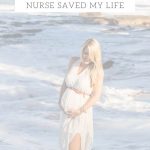
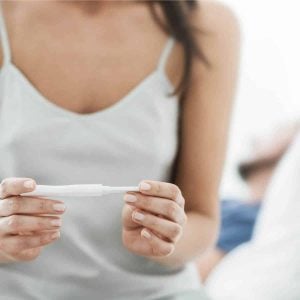
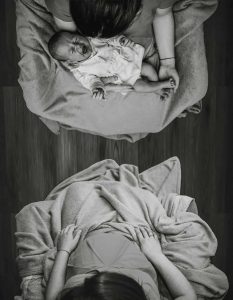
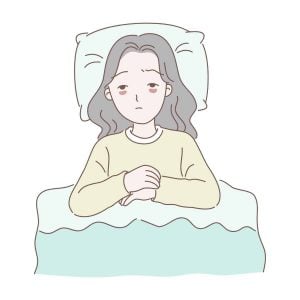




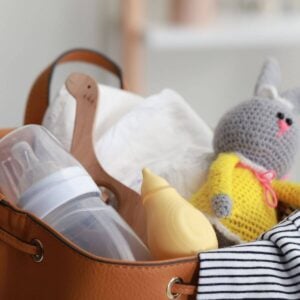
Thanks Katy for sharing my story! It was a privileged to partner with such an expert in the vast field of motherhood. Keep up the great work.